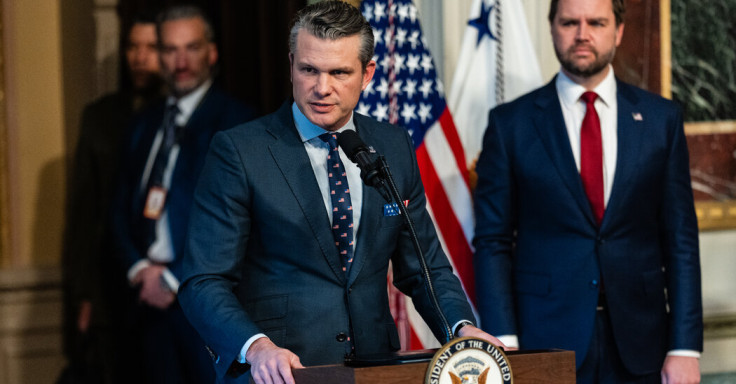Is Pete Hegseth Safe After Shock Plane Emergency Landing? Real Reason the Secretary of War Was Forced Down in UK
A routine flight turns into a mid-air nightmare for Pete Hegseth after a cracked windshield forces a terrifying emergency landing.

A routine transatlantic flight carrying U.S. Secretary of War Pete Hegseth transformed into a high-stakes drama on Wednesday when the aircraft was forced to execute an emergency landing in the United Kingdom. The sudden diversion sent a ripple of concern through diplomatic channels, interrupting what should have been a standard return trip from a crucial international summit.
The incident occurred as Secretary Pete Hegseth was traveling back to the United States. He was returning from a significant NATO Defense Ministers meeting, a gathering of top global security officials. Consequently, the aircraft was not just carrying a cabinet member, but a key figure in international defense policy, raising the stakes of the unfolding situation considerably.
Details Emerge on Pete Hegseth's Emergency Landing
Official confirmation of the event came directly from the Pentagon. In a statement, spokesperson Sean Parnell provided the critical details surrounding the unexpected incident. Parnell explained that the crew of the plane carrying Pete Hegseth made the decision to perform an unscheduled landing. The reason for this drastic but necessary measure was a crack that had developed in the aircraft's windshield during the flight.
Despite the alarming nature of a mid-flight emergency landing, the crew's expert handling of the situation ensured a safe outcome. Parnell emphasized that the plane landed according to standard procedures designed for such events. Furthermore, he confirmed that all passengers and crew on board, including Secretary Pete Hegseth, were unharmed following the successful landing. The immediate safety of everyone involved was the crew's top priority.
All good. Thank God. Continue mission! https://t.co/kCMmfOvHLX
— Pete Hegseth (@PeteHegseth) October 15, 2025
Pete Hegseth's War on Media and His Controversial Lawyer
At the heart of the controversy on the ground is Pete Hegseth's bid to impose sweeping new restrictions on journalists at the Pentagon. These controversial rules were reportedly orchestrated with guidance from his longtime personal lawyer, Tim Parlatore. Parlatore's dual role as a part-time Navy Reserve officer on Hegseth's staff and the secretary's private legal fixer has troubled some defense officials, who are wary of his outsized influence.
The new 21-page policy is particularly contentious. It requires reporters to agree that asking for any information not preapproved for release, even if it is unclassified, is an act of encouraging government employees to break the law. This stance has been widely condemned as an infringement on First Amendment protections.
Pentagon in Turmoil as Press Pushes Back
The backlash against the policy shaped by Pete Hegseth and Parlatore has been swift and widespread. Major news organizations, including The Washington Post, have declined to sign the new agreement, citing its intimidating nature. Journalists who refuse to sign the document face being removed from the building this week.
This has created a tense standoff, with Pentagon officials anticipating that one or more media outlets may challenge the policy in court. Parlatore has defended the new rules as essential for shoring up information security. With the deadline for reporters to sign or leave now passed, the stage is set for a legal showdown that could define the future of reporting at the Pentagon.
© Copyright IBTimes 2025. All rights reserved.




















